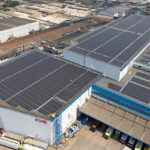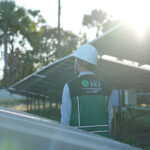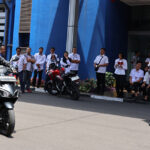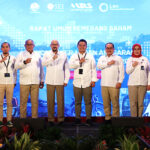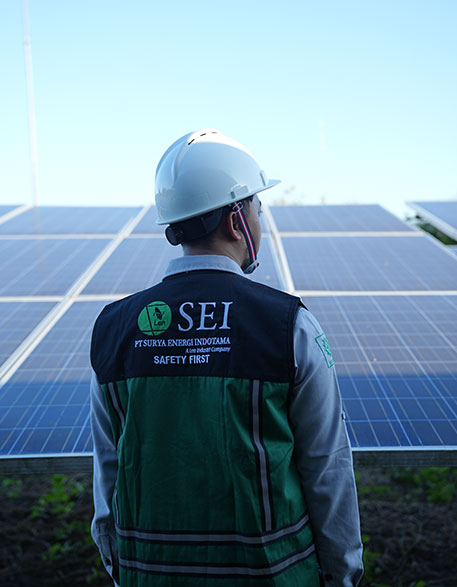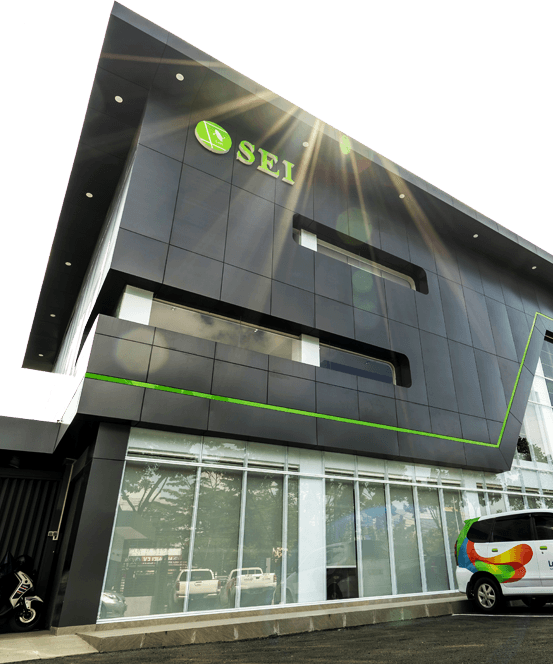Month: November 2024
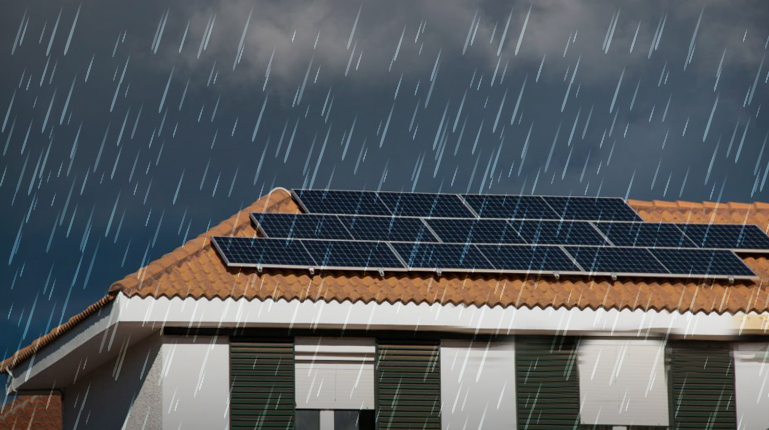
Can Solar Power Plants Still Work During Rainy Conditions?
Solar Power Plants (PLTS) are one of the renewable energy solutions that are increasingly in demand because they are environmentally friendly and have abundant energy sources, namely sunlight. However, one question that often arises is: can PLTS still work when the weather is cloudy or rainy?
Before going any further, let's first find out how PLTS itself works. Yes, as we know, PLTS works by converting solar energy into electrical energy through solar panels containing photovoltaic cells. These cells capture photons from sunlight and convert them into direct current (DC). This electricity is then converted into alternating current (AC) by the inverter so that it can be used by household electrical devices or distributed to the electricity grid.
However, the question arises, when conditions are cloudy or even rainy, does it affect the performance of the PLTS, here is the explanation.
PLTS performance is influenced by the intensity of sunlight received by the solar panels. On a sunny day, solar panels work with optimal efficiency because sunlight directly reaches the surface of the panel. However, when the weather is cloudy or rainy, the intensity of sunlight decreases because it is blocked by clouds.
However, PLTS can still generate electricity in cloudy or rainy conditions, but with lower efficiency. This happens because sunlight is still scattered and reaches the surface of the panel, although in smaller quantities. The decrease in efficiency usually ranges from 10-25%, depending on the level of cloud density and the type of solar panel used.
Not only that, besides affecting efficiency, rain also has its own benefits for PLTS. Rainwater helps clean the surface of the solar panel from dust, dirt, or other pollutants that can reduce the absorption of sunlight. Thus, clean solar panels can work optimally again after the rain stops.
With that, the question "Can PLTS still work in rainy conditions?" The answer is "Yes" PLTS can still work in rainy conditions, although its efficiency decreases compared to when the weather is sunny. However, this decrease does not make PLTS completely non-functional. With good maintenance and technology that continues to develop, PLTS remains a reliable choice for generating environmentally friendly electrical energy, even in areas with weather that is not always sunny.
The use of energy storage batteries is also a solution to ensure that electricity supply is always available at any time, regardless of weather conditions. That way, PLTS remains a promising investment for the future of sustainable energy.
Together with SEI, let's switch to renewable energy!
Berita Lainnya
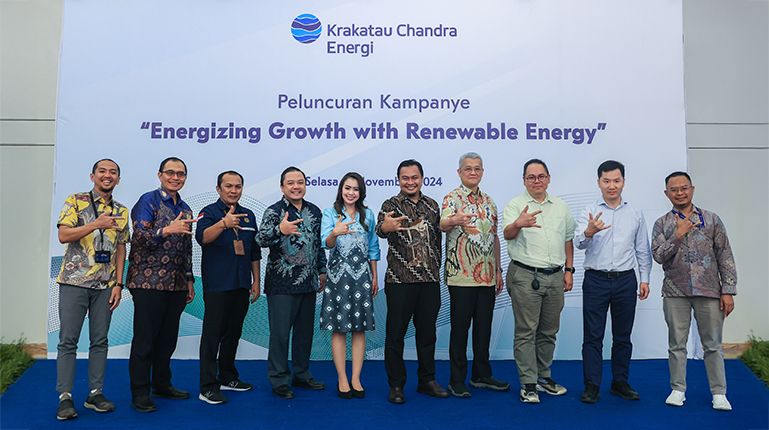
Synergy of SEI and KCE: Together Advancing Green Industry through the “ENERGIZING GROWTH WITH RENEWABLE ENERGY” Campaign
Jakarta (05/11/2024) – Ridwan Kurnia, Marketing and Business Development Director of PT Surya Energi Indotama (SEI) on behalf of all Commissioners, Directors and Employees congratulated the launch of the “ENERGIZING GROWTH WITH RENEWABLE ENERGY” campaign launched by its strategic partner, Krakatau Chandra Energi (KCE).
The campaign, which focuses on the implementation of green energy, was launched at the Media Gathering and interactive Talkshow event held to coincide with the commemoration of National Electricity Day. This initiative demonstrates KCE’s commitment to supporting industrial growth through the utilization of New Renewable Energy (EBT).
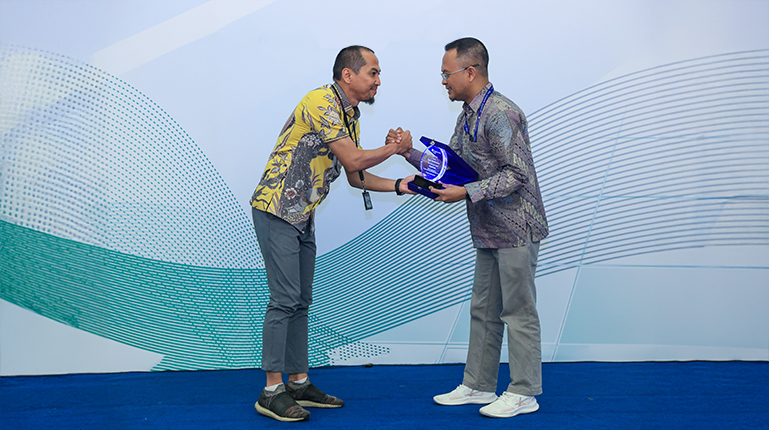
The launch event was attended by various important figures, including Hasan Maksum, ST., who represented the Directorate General of Electricity of the Ministry of Energy and Mineral Resources of the Republic of Indonesia as the Keynote Speaker and main resource person and Ridwan Kurnia, Director of Marketing and Business Development of PT Surya Energi Indotama (SEI) who on that occasion was selected as a guest speaker. In this talk show, they discussed the importance of collaboration between parties in realizing a sustainable energy future in Indonesia.
SEI expressed its pride in the long-standing collaborative relationship with KCE and appreciated the strategic steps of this campaign in echoing the use of renewable energy in the industrial sector. Ridwan Kurnia stated, "We see this campaign as an important step in strengthening Indonesia's position towards energy independence through sustainable solutions. Synergy between government, industry, and society is the key to accelerating the adoption of renewable energy."
Through this campaign, KCE and SEI hope to inspire concrete steps in the energy transition, in line with the national commitment towards cleaner energy. KCE also expressed its readiness to support the industry in Indonesia on its journey towards more environmentally friendly growth, in line with the shared vision to realize a greener and more sustainable industry.
Berita Lainnya
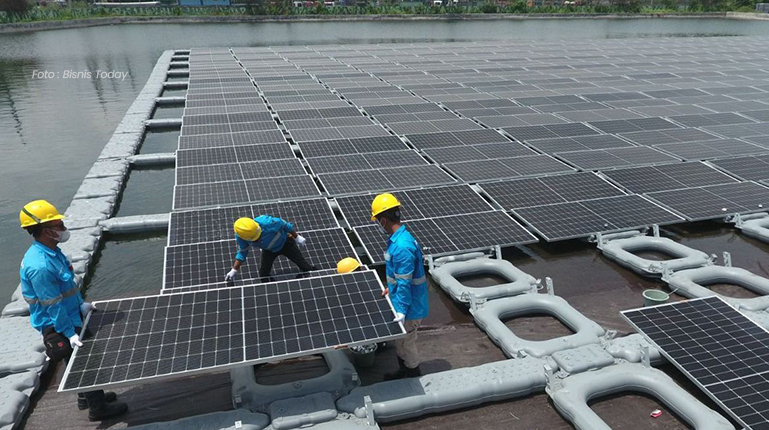
Getting to Know the Advantages and Disadvantages of Floating Solar Power Plants in Indonesia
Floating photovoltaic power plants (PLTS) are an innovative solution that is currently growing rapidly in Indonesia as an alternative to environmentally friendly power plants.
Analysis by the Institute for Essentials Services Reform (IESR) states that the potential for floating PLTS in Indonesia reaches 28.4 Gigawatts (GW). This potential is spread across 783 reservoirs and lakes, each of which has a minimum potential of 1 Megawatt (MW).
It is no wonder that the government is targeting to build 60 floating PLTS in Indonesia while simultaneously pushing the target of a power plant mix from EBT of 23 percent by 2025.
In terms of construction, the installation of floating photovoltaics is equipped with hollow plastic buoys that are designed to withstand extreme weather conditions and the potential for disruption to cables connected to electrical installations on land.
However, because of its character which is installed in water, floating PLTS also has negative impacts. Here are the advantages and disadvantages of floating PLTS (floating photovoltaics).
Advantages of Floating Solar Power Plants
- Space Utilization
By utilizing the water surface, floating solar power plants save land that is usually used for agriculture, settlements, or industry. This is very relevant in Indonesia, where large land areas are often difficult to obtain for large-scale energy projects.
- Increase Solar Panel Efficiency
Water has a natural cooling effect that can lower the temperature of solar panels. This lower temperature helps increase panel efficiency, as solar panels are more efficient at lower temperatures.
- Reduce Water Evaporation
Panels floating on reservoirs or lakes can reduce the rate of water evaporation, which is beneficial for areas prone to drought. This can be a major advantage for water management in Indonesia, especially in areas with long dry seasons.
- Minimize the Impact on Land Ecosystems
Because floating solar power plants are placed in water, this development will not disturb habitats or convert land areas, which are important in maintaining biodiversity in land ecosystems.
- Renewable and Clean Energy Source
Like solar power plants in general, floating solar power plants do not produce greenhouse gas emissions or air pollution. This contributes to Indonesia's target of reducing carbon emissions and achieving cleaner energy.
Disadvantages of Floating Solar Power Plants
- Higher Installation Costs
Additional infrastructure and components, such as buoys, anchors, and waterproof electrical systems, increase the installation costs of floating solar power plants compared to conventional solar power plants on land.
- More Complicated Maintenance
Floating solar power plants require more complicated maintenance due to the higher risk of corrosion in wet environments and difficult access. Waterproof equipment also requires more costs and more specialized maintenance procedures.
- Impact on Aquatic Ecology
Shades from solar panels and the presence of structures above the water can reduce sunlight entering the water, which may disrupt aquatic ecosystems, especially in terms of photosynthesis of aquatic plants.
- Vulnerable to Weather and Nature
Extreme weather such as strong winds, waves, or earthquakes can damage floating PV installations. The system must be designed very robustly to withstand Indonesia's diverse weather, especially during the rainy season or in areas prone to earthquakes.
- Potential Disturbance to Water Activities
Reservoirs and lakes are often used for other activities, such as irrigation, fisheries, or tourism. Floating PV can reduce the area that can be used for these activities or interfere with fishing boat routes.
Floating PV offers great potential as a renewable energy solution in Indonesia, especially to optimize the use of space and preserve water resources.
Realistically, however, floating PV is unlikely to replace large-scale power plants or the increasing trend of onshore PV anytime soon. But it is very possible that they can fill an important complementary role, adding capacity that is currently lacking.
Let's move towards renewable energy with SEI!
